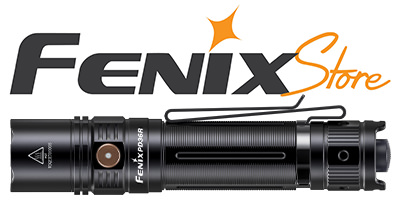Here is my imitation of Packhorse's 'Ring of Light', but not having an existing suitable camera and housing I decided to make it a composite light and camera housing.
 [/IMG]
[/IMG]
 [/IMG]
[/IMG]
 [/IMG]
[/IMG]
 [/IMG]
[/IMG]
I have used 4 XM-L leds driven at 2.8 amp to give something approaching 4000 lm and a combination of Hall sensors, a Picaxe microprocessor and Cannon CDHK to control the lights and a Cannon A590is camera, with no penetrations of the housing.
The whole thing at present is a working test bed, so apologies for the rough appearance. When I first started there were many yet to be solved details and the current build still shows the scars of a developing design and the learning curve of production techniques.
There are 4 Hall sensors; the 3mm magnet is mounted in a ptfe bobbin which runs within a cruciform slot, an elastic band snaps it back to the centre position.
The controls are grouped into 4 modes with two smallc oloured leds indicating the status.
Mode 0 is power management with battery check, camera display on/off and picaxe sleep.
Mode 1 is photo with zoom in and out, and shoots.
Mode 2 controls the macro mode on/off and shooting takes five photos with focus bracketing.
Mode 3 is lights and turns the led's on/off and ramps up and down the power.
The camera is controlled by the length of pulse sent by the picaxe to the camera via the usb cable.
Since the picaxe controls both the lights and the camera they can be synchronised so that when shooting, the lights go from a low level to full powers whilst the photo is taken, then turn off, as a pseudo flash plus focus light.
With the picaxe and the camera (via CDHK script), both fully programmable (in Basic), the custom options are endless. (inc options to shootin RAW, custom white balance etc etc)
The leds are wired 2S2P as are the 4 18650 batteries. Two 8x 7135 drivers power the xml's using 'downloads' technique to share one driver between two leds. The AMC7135 chips also act as the power switch, the pwm output from the picaxe into Vdd directly controls both on/off and brightness.
The housing has a 'chassis' of a 10mm aluminium plate which acts as the heat sink with the front and back covers milled out of thick Perspex sheets, 20mm at the front for the XML and two 25mm sheets for the camera.
The Perspex sheets are bolted to the chassis with ss bolts and sealed by 4mm O ring cord in a peripheral slot.
Light pollution into the lens port (4mm Perspex, and the only bit glued on) was at first a problem, requiring the port to be set on a sheet of black Perspex with a black plastic tube set into the lens tunnel and taped external edges.
So far I have tested it to 3.4m in the swimming pool, but there is plenty of meat left in the Perspex so I am willing to risk it down to whatever depth I chose to dive. There was nothing in the pool to judge the performance by, but dry test shots are promising.
Mark 2 ideas include two more leds to give a slightly directional light option, increasing the lens tunnel and port to accommodate closeup lens and filters, and powering the camera from the Li-ions.
Sorry if I am off topic in parts but I thought it would be the kind of project to interest you guys.
I'll be posting some underwater shots just as soon as I can.
Rod




I have used 4 XM-L leds driven at 2.8 amp to give something approaching 4000 lm and a combination of Hall sensors, a Picaxe microprocessor and Cannon CDHK to control the lights and a Cannon A590is camera, with no penetrations of the housing.
The whole thing at present is a working test bed, so apologies for the rough appearance. When I first started there were many yet to be solved details and the current build still shows the scars of a developing design and the learning curve of production techniques.
There are 4 Hall sensors; the 3mm magnet is mounted in a ptfe bobbin which runs within a cruciform slot, an elastic band snaps it back to the centre position.
The controls are grouped into 4 modes with two smallc oloured leds indicating the status.
Mode 0 is power management with battery check, camera display on/off and picaxe sleep.
Mode 1 is photo with zoom in and out, and shoots.
Mode 2 controls the macro mode on/off and shooting takes five photos with focus bracketing.
Mode 3 is lights and turns the led's on/off and ramps up and down the power.
The camera is controlled by the length of pulse sent by the picaxe to the camera via the usb cable.
Since the picaxe controls both the lights and the camera they can be synchronised so that when shooting, the lights go from a low level to full powers whilst the photo is taken, then turn off, as a pseudo flash plus focus light.
With the picaxe and the camera (via CDHK script), both fully programmable (in Basic), the custom options are endless. (inc options to shootin RAW, custom white balance etc etc)
The leds are wired 2S2P as are the 4 18650 batteries. Two 8x 7135 drivers power the xml's using 'downloads' technique to share one driver between two leds. The AMC7135 chips also act as the power switch, the pwm output from the picaxe into Vdd directly controls both on/off and brightness.
The housing has a 'chassis' of a 10mm aluminium plate which acts as the heat sink with the front and back covers milled out of thick Perspex sheets, 20mm at the front for the XML and two 25mm sheets for the camera.
The Perspex sheets are bolted to the chassis with ss bolts and sealed by 4mm O ring cord in a peripheral slot.
Light pollution into the lens port (4mm Perspex, and the only bit glued on) was at first a problem, requiring the port to be set on a sheet of black Perspex with a black plastic tube set into the lens tunnel and taped external edges.
So far I have tested it to 3.4m in the swimming pool, but there is plenty of meat left in the Perspex so I am willing to risk it down to whatever depth I chose to dive. There was nothing in the pool to judge the performance by, but dry test shots are promising.
Mark 2 ideas include two more leds to give a slightly directional light option, increasing the lens tunnel and port to accommodate closeup lens and filters, and powering the camera from the Li-ions.
Sorry if I am off topic in parts but I thought it would be the kind of project to interest you guys.
I'll be posting some underwater shots just as soon as I can.
Rod
Last edited:


